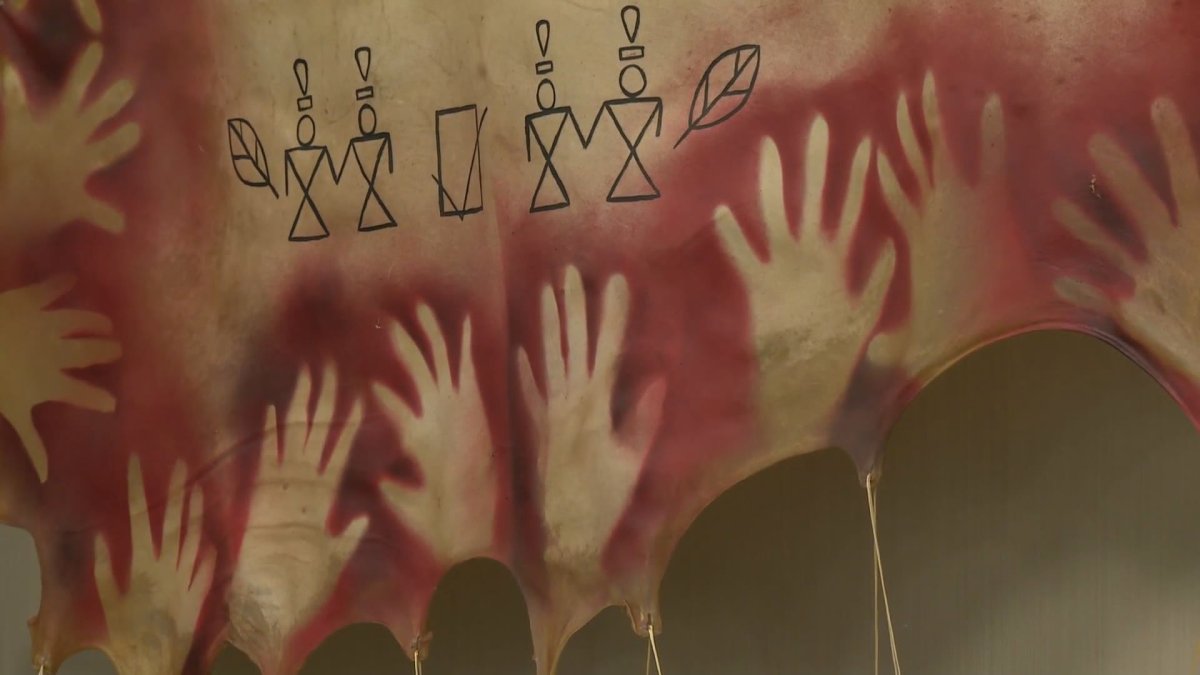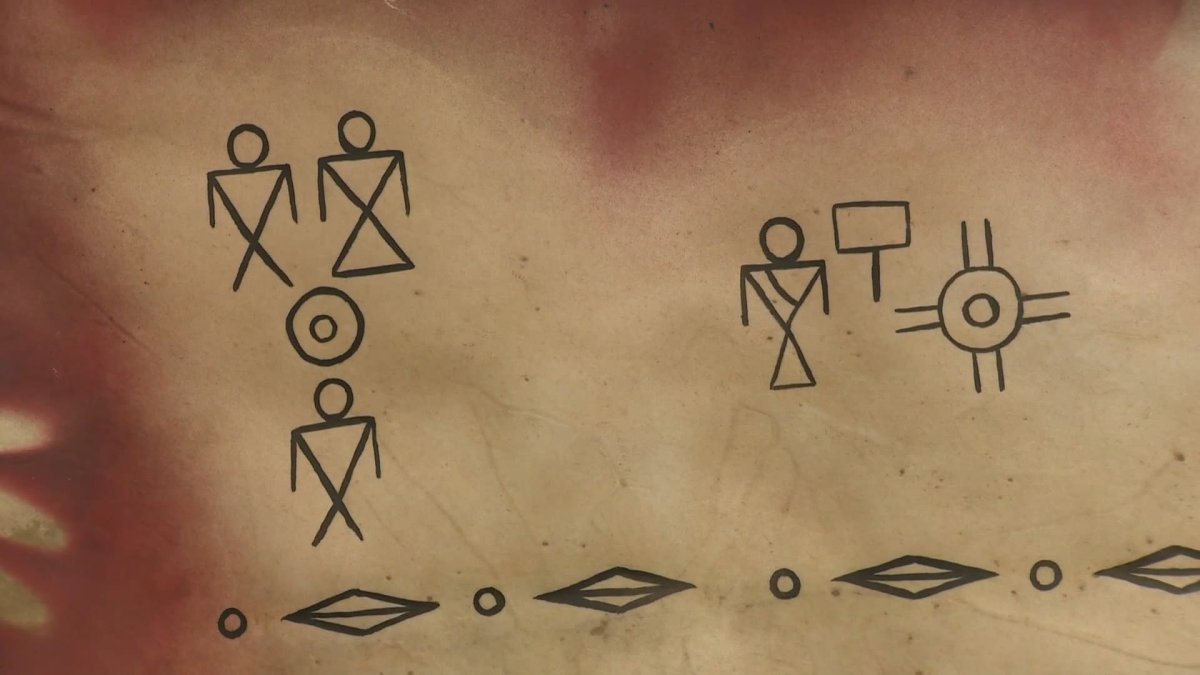Female artists from the Urban Society for Aboriginal Youth have created three augmented reality (AR) murals, chosen for specific Calgary locations.

It’s part of the Indigenous Women’s Augmented Mural Series, a yearlong project by 20 women from 15 to 30 years old.
The murals — featuring ribbon skirts, hide and a digitally created painting — focus on democratic participation, employment barriers and gender-based violence, and are comprised of mixed media elements, according to New Tribe Magazine.
It was a deep, meaningful project that told traditional stories in fresh ways and explored what it means to be an Indigenous woman, said USAY executive director LeeAnne Ireland on Wednesday.
“Projects like this, they mean a lot to young Indigenous women… It’s meaningful to the people that see the murals and they’re really fun because you can interact with them, but the process of making them was really powerful and we learned so much about each other and they learned so much about themselves.”
The group worked on the project from April 2019 to March 2020. Two of three unveilings have been postponed because of the COVID-19 pandemic.
The mural series was funded with $45,500 from the Alberta government, Ireland said.
Actively getting involved in democracy
The artists unveiled their permanent mural called “Women’s Count,” which tells the story of women’s governance and encourages their participation in politics, at Calgary Police Service headquarters on July 23.
Sticks and handprints frame the hide mural, the title of which reflects a winter’s count.
Ireland said the artists came up with their own symbols that reflect voting practices.
“Indigenous women used to be the primary governing bodies for Indigenous communities, and then how, through colonization, those roles were kind of squashed and how it continues to still play a negative role in how women participate in democracy,” she said, explaining that the mural is a call to action.
When using the USAY AR app, you can hear a story, reflecting oral traditions.
Police said they have been working with USAY for months to “find ways that our buildings can better reflect Calgary’s Indigenous heritage and we are honoured that they offered to hang this art in our headquarters.”
It is significant that this mural was placed there. Ireland explained that police forces, in general, have always been a suppression tool against Indigenous people.
“We thought it would be a good symbol of reconciliation to have that be a moment where we’re giving them this winter’s count that’s created by Indigenous women,” she said.
“Their accepting that is kind of like symbolism or representation of how we can foster reconciliation and build relationships between Indigenous people and the police and civic engagement moving forward.”
Artist Morrigan Caldwell was proud to see her art at CPS headquarters.
“I think it’s reassuring because we worked really hard on it and we did a lot to achieve it. So knowing that they appreciate it, it’s like something that’s really heartwarming,” she said at the unveiling.
Overcoming workplace barriers
The “Barrier Breakers” piece is about overcoming workplace obstacles.
Nine girls are in plain clothes, in black and white, which is how Ireland said the community sees them.
“People kind of view Indigenous women as not contributing to the workforce and not being part of the workforce, and so they wanted it to be like they were plain-clothed,” she said.
When you hold up your phone with the app and tap your screen, bricks fly off in a 3D effect.
“You hear an audio montage of different workplace sound effects and then you see the girls transformed into full colour in construction outfits, vet attire, health-care workers, social workers, teachers — all of these things that they aspire to be when they join the workforce and break down those perceived barriers for what it means to be an Indigenous woman trying to get into employment,” Ireland said.
She said there is a pervasive belief that Indigenous people don’t contribute, so the mural aims to shatter that by showing the women’s career goals via their attire.
“Sometimes people will think that they’re not being racist and they’ll say things like, ‘Oh, I didn’t realize you were Native. You have a job and a house and stuff.’ That just reinforces this idea that Indigenous people don’t contribute to Canadian society, that we don’t work,” Ireland said.
“Barrier Breakers” is set to be displayed at Forest Lawn High School, chosen because of how interactive the piece is, plus the universality of not knowing what you want to do when you grow up.
“Artwork sends a powerful message.”
WATCH: Video shows how the murals’ AR components work.
Tackling gender-based violence
Three traditional ribbon skirts — from small to large, representing the past, present and future — comprise the piece called “Vulnerable to Valuable,” which tackles gender-based violence.
The skirt pictured in the middle represents the present.
“You see this recognition of that history and you see the red handprint video of the girl putting the red handprint over her mouth, which we thought symbolized how Indigenous women like my age are creating activism and voice and bringing awareness to our past,” Ireland said.
If you use the AR app on the small skirt, you will see a field of bison.
“We thought that symbolized getting back to our roots, getting back to our culture and embracing our future where Indigenous girls don’t have to constantly be activists and fighting for justice,” Ireland said.
“There just is justice.”
The piece will be placed at homeless shelter Inn From the Cold, Ireland said, because it is a good conversation starter and some people there might be experiencing gender-based violence or family instability.
“They might not have the app… so we thought that it’s kind of visually stunning on its own and it has a very cultural presence,” she said.









Comments